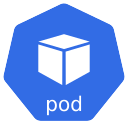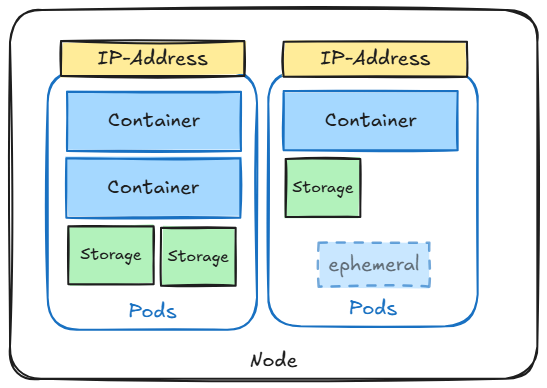Kubernetes Resources
In Kubernetes, resources are like building blocks used to create and manage your cluster. Each resource is an object with metadata (such as names and labels) and a desired state that defines its behavior. All objects in Kubernetes are managed by an API and stored in the etcd database.
For example, a Pod resource defines how to run a group of containers, while a Service resource manages network access to those containers. Everything you can manage with kubectl or the Kubernetes API - like workloads, storage, or configuration - is a resource, making them essential for defining and controlling your cluster's behavior.
The following command lists all the resources that can be managed in a Kubernetes cluster, including their names, short names, API versions, and whether they are namespaced:
kubectl api-resources
The most relevant resources for the KCNA exam are marked red
Resource Overview
You can link to the table here
Core Resources
- Pod
- Service
- ConfigMap
- Secret
- Namespace
- PersistentVolume
- PersistentVolumeClaim
- ServiceAccount
- Binding
- ComponentStatus
- Endpoints
- Event
- LimitRange
- PodTemplate
- ReplicationController
- ResourceQuota
Workloads
- Deployment
- ReplicaSet
- DaemonSet
- StatefulSet
- CronJob
- Job
- ControllerRevision
Networking
- Ingress
- NetworkPolicy
- IngressClass
RBAC (Role-Based Access Control)
- Role
- RoleBinding
- ClusterRole
- ClusterRoleBinding
Storage
- StorageClass
- CSIDriver
- CSINode
- CSIStorageCapacity
- VolumeAttachment
Admission Control
- MutatingWebhookConfiguration
- ValidatingWebhookConfiguration
API Extensions
- CustomResourceDefinition
- APIService
Authentication and Authorization
- TokenReview
- LocalSubjectAccessReview
- SelfSubjectAccessReview
- SelfSubjectRulesReview
- SubjectAccessReview
Autoscaling
- HorizontalPodAutoscaler
Certificates
- CertificateSigningRequest
Coordination
- Lease
Discovery
- EndpointSlice
Events
- Event
Flow Control
- FlowSchema
- PriorityLevelConfiguration
Node Management
- RuntimeClass
Policies
- PodDisruptionBudget
- PodSecurityPolicy
Scheduling
- PriorityClass
Resource Description

POD
|
Useful Links: |

|
|
|
Detailed Description:
A Pod is the smallest deployable unit in Kubernetes and serves as the basic building block for running applications in the cluster. Each Pod encapsulates one or more containers, which share the same resources such as storage, networking, and compute. Containers within a Pod are tightly coupled, meaning they always run together on the same node and share the same network namespace, allowing them to communicate with each other using Typically, a Pod has a single container, but it can host sidecar containers that assist the main application container with additional tasks like logging, monitoring, or proxying requests. Pods are ephemeral by nature, designed to be replaceable and scaled according to workload demands through higher-level Kubernetes abstractions like Deployments or StatefulSets. Key characteristics of Pods include:
|
|

Service
|
Useful Links: |

|
|
|
Detailed Description:
A Pod is the smallest deployable unit in Kubernetes and serves as the basic building block for running applications in the cluster. Each Pod encapsulates one or more containers, which share the same resources such as storage, networking, and compute. Containers within a Pod are tightly coupled, meaning they always run together on the same node and share the same network namespace, allowing them to communicate with each other using Typically, a Pod has a single container, but it can host sidecar containers that assist the main application container with additional tasks like logging, monitoring, or proxying requests. Pods are ephemeral by nature, designed to be replaceable and scaled according to workload demands through higher-level Kubernetes abstractions like Deployments or StatefulSets. Key characteristics of Pods include:
|
|
